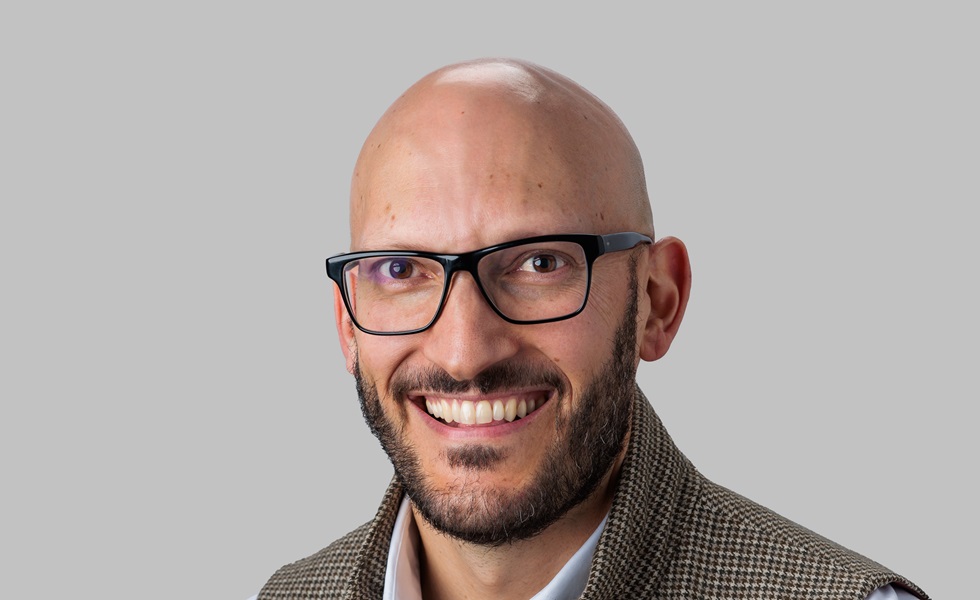SAIL Investments: Rethinking the global private credit universe
SAIL Investments: Rethinking the global private credit universe

As private credit continues its rapid ascent across institutional portfolios, asset owners are being called to look beyond familiar geographies and structures. In this conversation with Financial Investigator, Johnny Brom, CIO and Founder of SAIL Investments, challenges the orthodoxy of ‘Private Credit 1.0’ and explores what’s next: overlooked global markets, strategic lending to non-sponsored mid-market corporates, and integrating physical risk mitigation and sustainability as tools for value creation and portfolio resilience.
By our editorial team
Various asset managers such as Apollo and BlackRock are forecasting continued expansive growth in private credit. Beyond US and European sponsor-driven deals, where do you expect this growth to come from? And how relevant is this next phase of growth to institutional portfolio asset allocation?
‘This may be the central question in private credit today. If private credit has space to double or triple in scale over the coming years, where is this growth going to materialize?
Most allocations today still reflect ‘private credit 1.0.’ – concentrated in the US and to a lesser extent Europe, structured around sponsor-backed transactions, broadly syndicated loans, and CLOs. But that model covers a very narrow slice of the global corporate landscape. At least 80% of mid-market businesses worldwide are privately owned and de facto nonsponsored. They rarely intersect with traditional leveraged buyouts and have long depended on local or regional bank financing.
The potential for private credit expansion lies in this overlooked global middle. A staple sector for banks, but one crying out for more innovative and strategic lending solutions. A large group of these corporates are enterprises operating in core industries which need to transition to sustainable modes of production. They often cannot yet access capital markets, but they are central to real-world supply chains. They are too mature to stay bankfinanced, too complex to be commoditized, and too strategic to ignore. If the next phase of private credit is about scale in order to match institutional asset owners’ portfolio fit, then perhaps we need to look further afield. Not just geographically, but also structurally.’
Most institutional asset owners are also navigating growing pressure to align their portfolios with sustainability goals in order to manage material physical and transition risks. Can private credit serve both needs?
‘Let’s consider what is at stake. Over half of global GDP is moderate-to-highly dependent on nature and the services it provides. At the same time, climate volatility and ecosystem degradation are already disrupting core asset classes, from agriculture to infrastructure to insurance liabilities.
When one overlays this with regulatory developments, from IFRS and IAS to the stress-testing exercises of central banks, a clear imperative emerges: physical risks can no longer just be considered an externality. They must be priced, mitigated, or at the very least, properly understood.
Yet, as you asked, how much of today’s private credit pipeline would be able to actively address this? If portfolios are to grow in this asset class, allocators may need to ask not just where they can find yield, but also where they can find resilience. This reframes the opportunity. In segments of the global economy where physical systems – land use, water, biodiversity, and climate-sensitive supply chains – are critical, credit serves not just as an efficient financing tool but as a structuring mechanism for mitigation and adaptation. Through strategic design of the lending itself, rather than relying merely on labels or overlays, credit can fully incorporate physical risk management of the underlying borrower’s business. In effect, this approach can materially derisk credit exposure, driving alpha in these portfolios.’
80% of mid-market businesses worldwide are privately owned and de facto non-sponsored. The potential for private credit expansion lies in this overlooked global middle.
So why hasn’t more of the asset management industry moved into this space? If the opportunity is compelling and the need is evident, what’s holding things back?
‘Asset managers tend to scale where industry infrastructure already exists: credit ratings, syndication pathways, consultant buy-in. Many emerging opportunities, by contrast, require more ground-up work. They involve selforigination capabilities, longer timelines to embed value creation plans into borrower’s growth plans and link them to clear covenants, deep due diligence preloan disbursement, and sector-specific academic knowledge that doesn’t always sit within traditional investment teams.
Moreover, the industry has often treated sustainability as a marketing feature, not a financial lever. When strategies are built around retrofitting frameworks like SFDR or ticking ESG boxes ex-post, the unlocking of real economic value drivers for the underlying borrowers – things like market optionality, margin optimization, resilience built in combination with emerging trade rules – is overlooked.
What if we flipped the lens? What if sustainability wasn’t a screening tool, but a proxy for unlocking economic value captured in core industry sectors? The opportunity isn’t about being more virtuous – it’s about looking where others are not, applying real economic logic, and thinking on a medium- to long-term scale, matching the majority of the institutional asset owners’ timelines. It’s about structuring credit strategically and aligning with long-term operational resilience, particularly in sectors undergoing transition or exposed to external shocks.’
For an asset owner managing billions in liabilities and cashflow matching, what does this mean in practice? How does this translate into portfolio-level requirements?
‘Here’s where it gets interesting. Across geographies that produce much of the world’s physical commodities – agriculture, forestry, food systems, and mining assets – many of the borrowers are exporting in USD, but are based in jurisdictions dominated nearly entirely by bank lending. That creates a gap in medium- to long-term growth finance. Most of these family-owned companies are not looking to sell all or part of their business, but they are looking for strategic, long-term financing. An international direct lender delivering real strategic value has a huge opportunity to access these attractive companies. Loans can be structured in hard currency, senior secured, and underwritten to heavy financial maintenance covenants. Family-owned business are looking for a strategic partner and smartly structured private credit is the answer.
More importantly, their economics can be strengthened by embedding forwardlooking sustainability criteria. Not only because it’s increasingly required by regulators around the world, but also because it directly affects their economic resilience, and thus their success.
As asset owners will need to keep pace with the growing private credit market by reflecting allocation growth in their private credit sleeves, the question to answer will be how much more concentration of the traditional senior loans they can add and whether meaningful diversification can make their private credit allocations more efficient. We believe that longer-dated, senior, secured, non-sponsor-driven global private credit can provide the solution here.
What if we treated nature and climate risk as core to enterprise value? In sectors like land-use and food production, this is no longer hypothetical.
At the same time, asset owners need to step up in finding solutions to the impending physical and transition risks threatening their assets and reputation. Sustainable global private credit when embedding value creation plans in borrower’s growth plans, pre loan disbursement, is probably better placed than any other asset class to address these challenges. The scalability of credit to all corners of the world is just that much more significant compared to all other asset classes.’
Is this not already being solved by carbon markets, nature-based credits, or thematic ESG debt?
‘Those are important tools, but they are mainly fragmented, small in scale, and regulatory oversight remains patchy. More importantly, many of these treat climate change and nature as an externality to be compensated for, rather than as a source of alpha, or hidden economic value to be unlocked.
What if we treated nature and climate risk as core to enterprise value? In sectors like land-use and food production, this is no longer hypothetical. For example, companies that can verify deforestation-free supply chains or meet traceability mandates, are increasingly favored by global buyers. Their products command price premiums. Their access to regulated markets improves. Their operational stability in the face of climate risk increases.
These are not offsets. They are embedded improvements in business and hence credit quality.
When lending is designed to reinforce these dynamics – tracking hectares of protected forest, emissions reductions, supplier traceability, or smallholder integration – what we are really tracking is resilience. That resilience can reduce credit risk. It can increase enterprise value. And it can unlock growth paths – such as public listings or international bond issuance – that would otherwise remain closed. This is what we mean by sustainability as a financial alpha play.’
In a world of rising capital flows into private credit, how should asset owners think about this type of exposure alongside traditional allocations?
‘Start by asking: what’s missing? If the bulk of current private credit sits in the same jurisdictions, the same sectors, and often the same risk factors, where is the improved diversification actually coming from?
The answer may lie in parts of the global economy that have been strategic-capitalstarved. Not because they are riskier, but because they are harder to reach, model, or scale by international non-bank lenders. But that is changing.
As institutional standards – on data, documentation, verification – move into these sectors, the ability to construct robust, long-duration, risk-adjusted credit portfolios beyond the core markets becomes increasingly tangible.
The challenge for allocators is no longer about willingness. It’s about readiness: finding partners who can execute.
But the upside is clear. When you can access credit that is structurally de-risked, fundamentally resilient, and economically essential – you’re not just allocating differently. You are future-proofing the very role private credit plays in your portfolio.’
|
SUMMARY Growth in private credit lies beyond US/Europe sponsor deals, especially in underserved, non-sponsored mid-market firms globally. These companies are strategic, mature, and need financing for sustainable transitions. Private credit can embed resilience and alpha by structurally addressing physical and climate risk. Scaling requires deep due diligence, sector knowledge, and long-term structuring. Sustainability should be viewed as value creation, not just compliance. Asset owners must seek diversified, resilient, and forward-looking private credit to future-proof portfolios. |
|
CV Johnny Brom Johnny Brom is founder and Chief Investment Officer of SAIL Investments, where he also leads the Investment Committee. Brom has a diverse background in business development and investment strategy for companies across South Africa, North America, and Europe. He started his career at JP Morgan Securities and held a role at a Cape Town-based boutique asset manager, accumulating over 17 years of investment experience in developed, emerging, and frontier markets. Brom holds a Master's degree in Finance from SOAS University of London, a PE specialisation from London Business School, and a Business Science degree from the University of Cape Town. |










